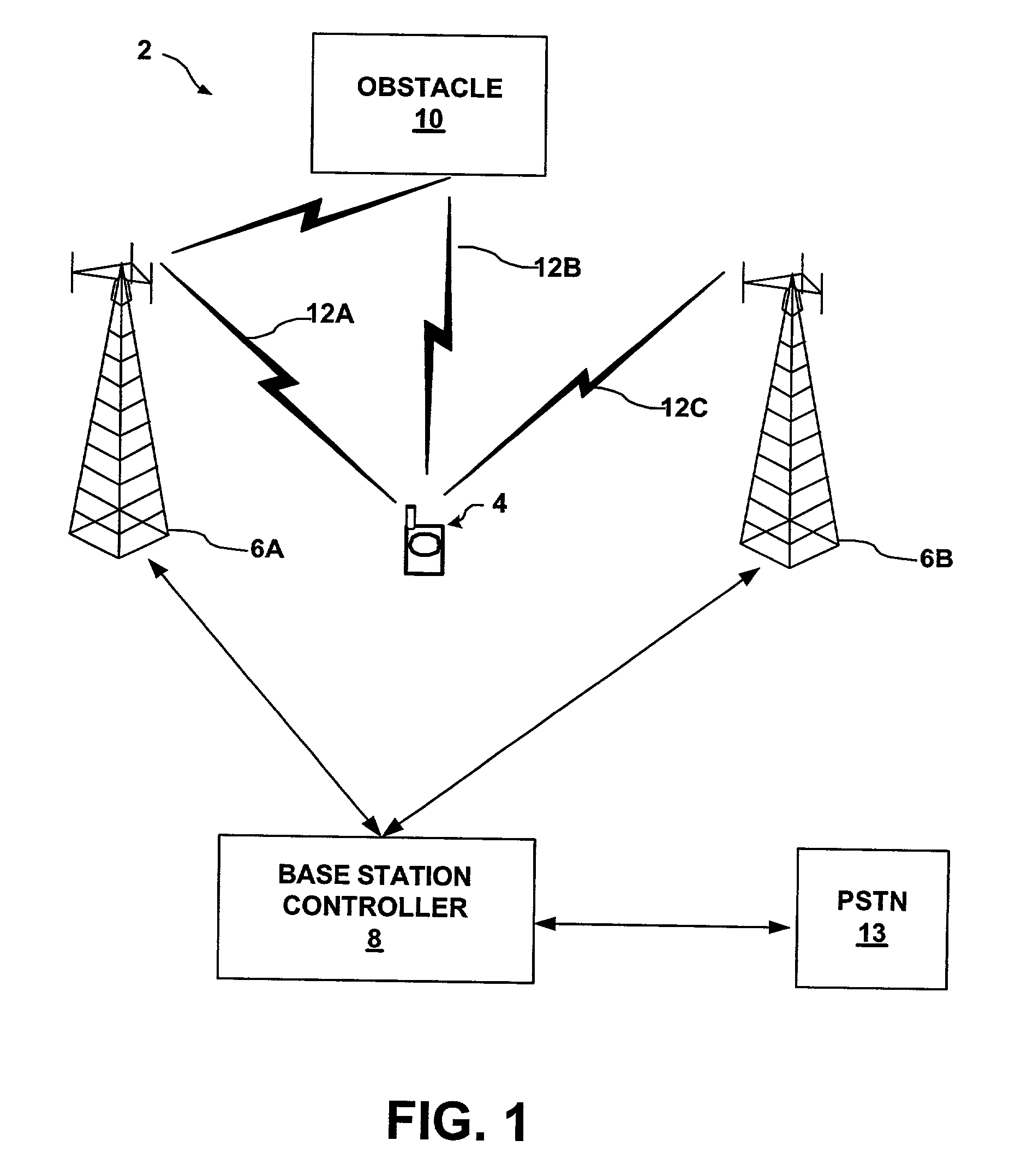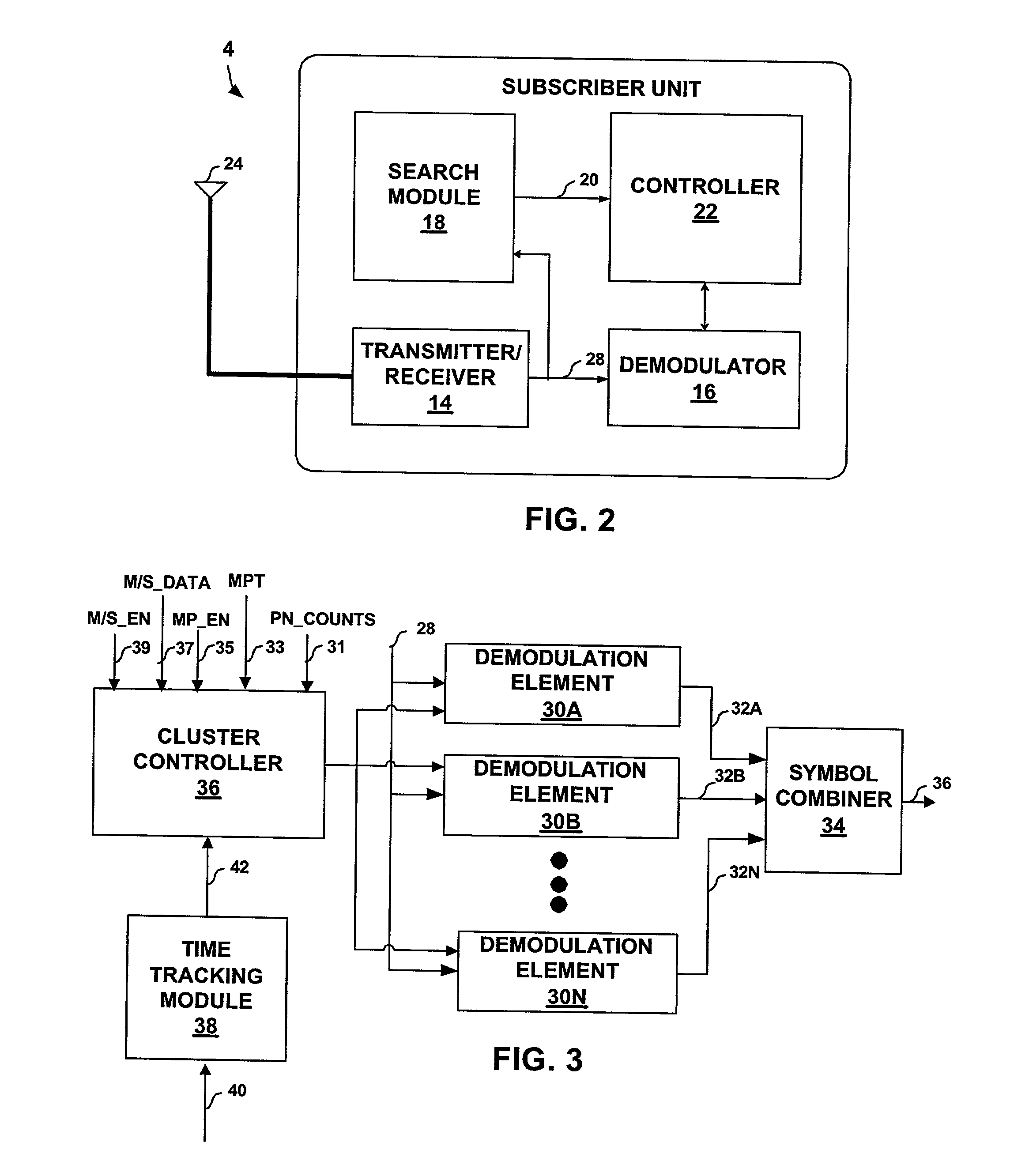Time-tracking for clustered demodulation elements in a spread spectrum system
a spread spectrum and time tracking technology, applied in the field of demodulating spread spectrum signals, to achieve the effects of improving signal to noise ratio, power control and capacity, and improving performance in unresolvable multipath environments
- Summary
- Abstract
- Description
- Claims
- Application Information
AI Technical Summary
Benefits of technology
Problems solved by technology
Method used
Image
Examples
Embodiment Construction
[0032] FIG. 1 is a block diagram illustrating a spread spectrum telecommunication system 2 in which subscriber unit 4 receives a number of spread spectrum signals 12, also referred to herein as "paths." In particular, subscriber unit 4 receives signal 12A from base station 6A, as well as signal 12B caused by reflection of signal 12A from obstacle 10. In addition, subscriber unit 4 receives a spread spectrum signal 12C from base station 6B. Obstacle 10 may be any structure proximate subscriber unit 4 such as a building, bridge, car or even a person. Examples of subscriber unit 4 include a cellular radiotelephone, a satellite radiotelephone, a PCMCIA card incorporated within a computer, a personal digital assistant (PDA) equipped with wireless communication capabilities, and the like. Base station controller (BSC) 8 provides an interface between base stations 6 and the public switched telephone network (PSTN) 13. In this manner, BSC 8 may route calls between subscriber units 4 and oth...
PUM
 Login to View More
Login to View More Abstract
Description
Claims
Application Information
 Login to View More
Login to View More - R&D
- Intellectual Property
- Life Sciences
- Materials
- Tech Scout
- Unparalleled Data Quality
- Higher Quality Content
- 60% Fewer Hallucinations
Browse by: Latest US Patents, China's latest patents, Technical Efficacy Thesaurus, Application Domain, Technology Topic, Popular Technical Reports.
© 2025 PatSnap. All rights reserved.Legal|Privacy policy|Modern Slavery Act Transparency Statement|Sitemap|About US| Contact US: help@patsnap.com



